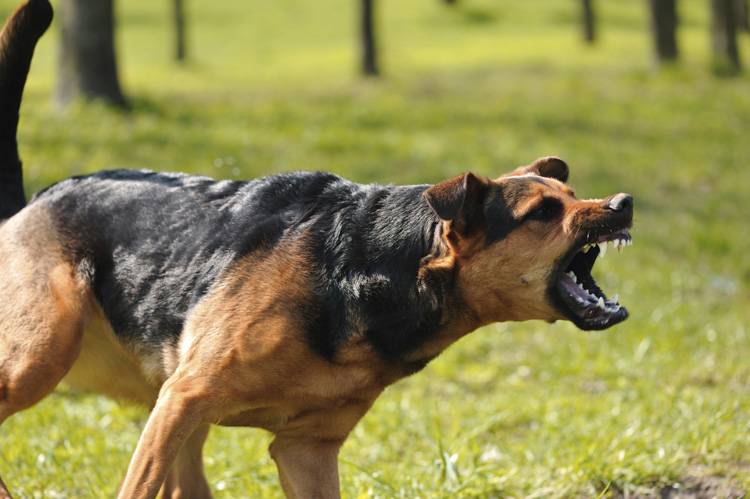Aggressive Dog Behavior
I feel aggression is a very misunderstood label that we tack on animals we don’t understand. Let’s discuss dog aggression myths.
What is dog aggression?
Dog aggression in layman’s terms means a dog threatens to cause harm to another dog or person. Wikipedia states aggression in its broadest sense is “behavior, or a disposition, that is forceful, hostile or attacking. It may occur either in retaliation or without provocation.” Aggression is a behavior, which means it’s learned usually by environmental exposures. Any dog can learn to be aggressive if he is exposed to a threatening situation.
- Dog’s toenail was cut too short, which caused pain. Dog growls when you approach with nail trimmer to prevent further pain.
- Dog loves his new chew bone and growls when someone approaches (this is normal canine behavior). When chewing, he’s telling you he’s not sharing his bone.
- Dog was bullied by another dog at the dog park. Dog learns to scare off other dogs with aggression to prevent the bullying from happening again.
Is it nature (genetics) or nurture (exposed to scary things)? Genetics can certainly play a role when turned on by exposure to scary things. One thing I know for sure, prevention is worth its weight in gold! If your dog reacts with threat to cause harm:
- Take a step back and look at the environment.
- Determine what (the trigger) caused this reaction. Was it another dog approaching you? A stranger?
- Once you determine what is causing this behavior to happen (trigger), then you can address it.
Does aggression mean a dog is dominant?
No, that’s a huge myth. Dominance between dogs and people is a myth. This was debunked by science. Dogs clearly understand we are humans and not dogs. While dogs learn to read and interrupt our body language, dogs become confused when we try to mimic their dog language.
It’s like someone speaking in a foreign language. We don’t understand what the person is asking even when he begins speaking louder. If someone speaking a foreign language made you walk through doors last, leaned his body against you, growled at you, pinned you down, or forced you to sit or lay down, would this teach you his language any quicker? I think not. You’d think he was crazy, and you’d probably learn to threaten this person when he tries this again. This is aggression, which was learned.
Dogs will jump on you, run out the door first, lean against your leg, pull on the leash, growl when you try to take a yummy bone and bark at you for attention because they do not understand what polite behaviors we want instead. This is not a dominance thing; it’s a teachable moment. It’s our job to reward dogs when they offer appropriate behaviors. To read research on debunking the dominance myth, check out AVBIG: Debunking dominance in dogs and AVSAB: Position Statement on the Use of Dominance Theory in Behavior Modification of Animals.
Are specific breeds more aggressive than others?
No, that’s a huge myth. Scientific research has and continues to debunk this dog myth. If you would like to read the actual research paper, you can view it here. While some breeds were bred to protect livestock or kill vermin, this does not mean they are programmed to threaten all dogs and people. I do not recommend herding dogs, working dogs or Terriers for first-time dog owners, as these dogs are usually larger and can knock people and small kids over easily. Terriers will kill vermin, which is not an easy sight, especially for new pet parents.
Personally, I share my home with a Rottweiler and Bull Terrier, and they are the sweetest dogs ever! Sobek (Rottweiler) especially loves children and loves them even more when they are in strollers (at his height) and covered in gooey cotton candy (he will leave them spotless after his licking session). Stella (Bull Terrier) is an enthusiastic greeter, but she will kill vermin.
As an Adoption Coordinator for Southern States Rescued Rottweilers, I’ve encountered Rottweilers that endured extreme hardships, exposed to many scary environmental triggers, and have every right to be aggressive toward humans and other dogs, but they choose to be kind! Aw, dogs, aren’t they awesome? 🙂
Labels should be on the back of food containers and not dogs or humans. Myths are just that—myths. 🙂
Let’s discuss other dog training myths in the comments below.




